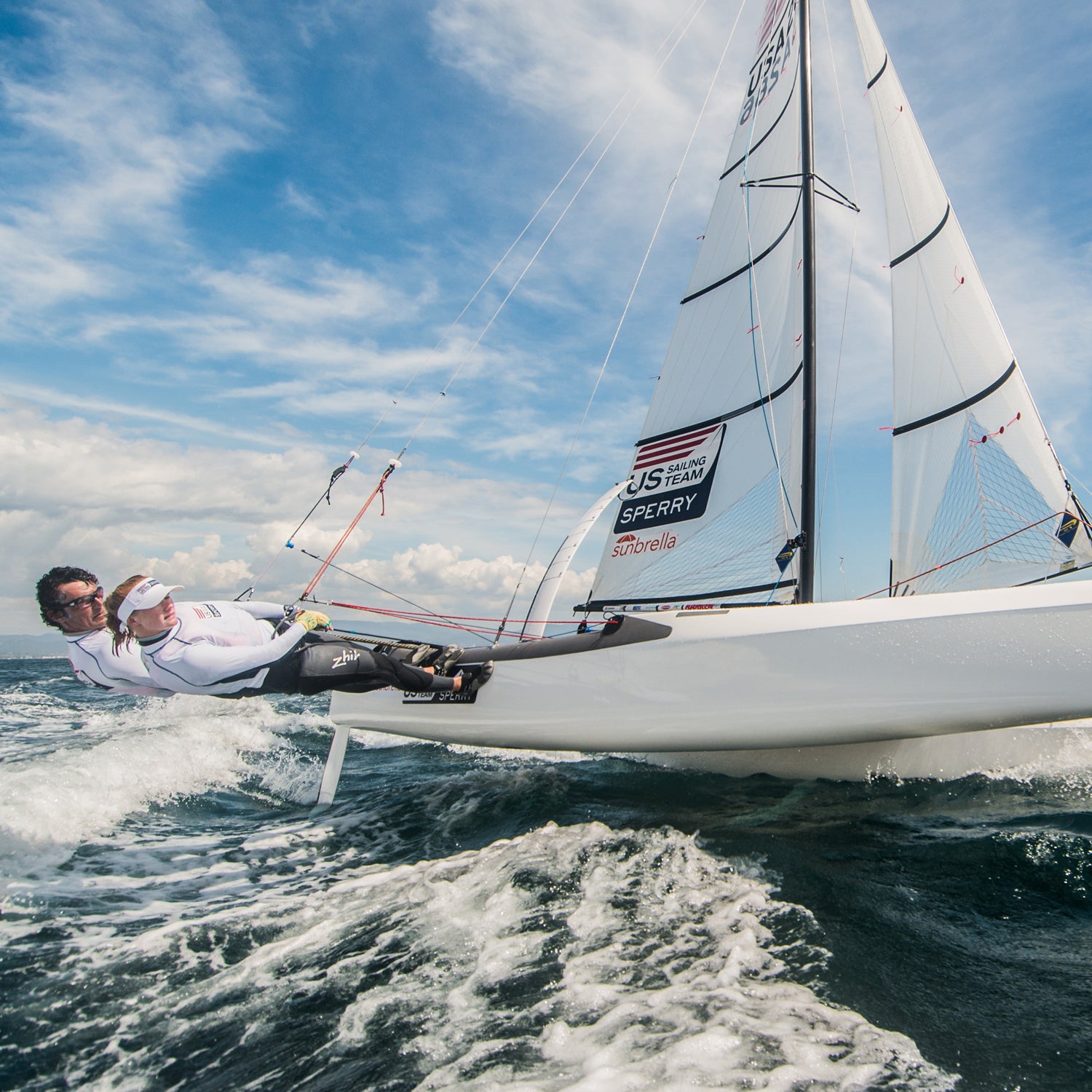This year, Olympic organizers will introduce an ultrafast catamaran in the mixed multi-hull sailing category, one of ten classes in which sailors will compete. Like the bigger catamarans that race in the , the Nacra 17 employs curved daggerboards, or foils. They enable 30-mile-per-hour speeds and make the 17-foot boats appear to be flying. “If the previous catamarans were Indy cars, these are like Formula One,” says 40-year-old U.S. helmsman Bora Gulari, who lives in Detroit. Gulari, a two-time world champion in the Moth class of foil-equipped sailing dinghies, started sailing the last May. He and his partner, 24-year-old Louisa Chafee, a three-time All-American at Brown University, have been climbing the world rankings ever since. (Standing as of early June: 41.) Here they explain the keys to piloting the new boats and what will make the difference in Rio.��
Art of Flight
Curved ten-pound dagger-boards help keep the bows from submarining and flipping forward, but they’re also fickle—if things go wrong, the cat can rear up and then splat back down, killing speed with every impact. “You try to get the thing just flying, but not too much,” says Gulari.
Drive Smart
Multihull races, in which racers maneuver around a handful of buoys, last about half an hour but are often decided in the last ten feet, so precision counts throughout. “I’m constantly making tiny corrections to keep the boat at the right angle,” Gulari says.��
Anticipation
Compared with previous Olympic catamarans, the Nacra is lighter (311 pounds versus 342) and narrower (eight feet six inches versus ten feet one inch). That makes it more susceptible to wind and waves, requiring more scrambling to maintain maximum velocity.��
Full Speed Ahead
While Gulari drives, Chafee makes sure the boat is going as fast as possible. She adjusts the daggerboards up and down, managing the boat’s lift, and trims both the mainsail and the spinnaker, which fills with wind and is located above the bow.��
The Joe Frazier of the Catamaran
To stay fit, Chafee sails two to four hours a day, then trains at the gym for another hour or two with a boxing coach. “It’s all about being very precise in your movements,” she says.


